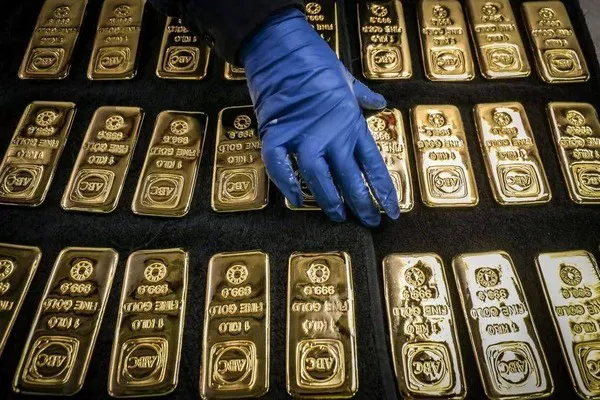Gold leaf has captivated artists, architects, and enthusiasts for centuries, offering a luxurious touch to various applications. Its delicate, shimmering appearance elevates everything from art to culinary creations. Understanding the worth of gold leaf involves more than just the market price of gold; it encompasses production methods, applications, and historical significance. This article delves into what gold leaf is, how its value is determined, and its various uses across different industries.
What is Gold Leaf?
1. Definition and Characteristics
Gold leaf is a very thin sheet of gold that is hammered or rolled to a thickness of 0.1 microns or less. It can be made from various karats of gold, typically ranging from 22k to 24k.
Appearance: Gold leaf has a bright, reflective surface that gives it a distinctive luster.
Texture: The ultra-thin sheets are fragile and require careful handling.
2. Production Process
The creation of gold leaf involves a meticulous process that includes:
Gold Purification: High-quality gold is refined to remove impurities.
Hammering or Rolling: The gold is then hammered or rolled into thin sheets. This labor-intensive process can result in sheets large enough for various applications.
Cutting: Once the desired thickness is achieved, the gold leaf is cut into usable squares or rectangles.
Determining the Value of Gold Leaf
1. Factors Affecting Gold Leaf Price
The worth of gold leaf is influenced by several factors:
Gold Market Price: Since gold leaf is composed of gold, its base value is linked to the current market price of gold per ounce.
Purity: The karat of gold used significantly impacts value. For example, 24k gold leaf is more valuable than 22k due to its higher gold content.
Thickness: Thinner sheets may be less valuable than thicker ones, although this can depend on the intended use.
Craftsmanship: The skill and reputation of the artisans producing the gold leaf can also affect pricing.
2. Pricing Examples
As of recent market trends, the price of gold leaf can vary widely:
Gold Leaf Sheets: A pack of 25 sheets of 23k gold leaf can range from $30 to $100, depending on the supplier and quality.
Specialty Gold Leaf: Varieties like antique gold leaf or colored gold leaf may command higher prices due to their unique qualities.
Applications of Gold Leaf
1. Art and Decorative Crafts
Gold leaf is extensively used in the world of art and decoration:
Framing: Many artists use gold leaf to embellish picture frames and add value to artwork.
Painting: Some painters incorporate gold leaf into their works, especially in traditional techniques like gilding.
Sculpture: Gold leaf can be applied to sculptures to enhance their visual appeal.
2. Architecture
Historically, gold leaf has adorned various architectural elements:
Domes and Spires: Iconic buildings often feature gold leaf on their domes or spires, symbolizing wealth and divinity.
Interior Decoration: Gold leaf is commonly used in interior design to highlight ceilings, moldings, and other architectural features.
3. Culinary Uses
Gold leaf has also made its way into the culinary world:
Gourmet Dishes: High-end restaurants sometimes use edible gold leaf to garnish dishes, adding a touch of luxury.
Confectionery: Chocolates and desserts may be adorned with gold leaf to create visually stunning presentations.
4. Religious and Cultural Significance
In many cultures, gold leaf holds spiritual significance:
Religious Artifacts: Gold leaf is often used in the decoration of religious icons and artifacts, symbolizing purity and divine presence.
Ceremonial Uses: Certain ceremonies incorporate gold leaf, reinforcing its cultural importance.
The Economics of Gold Leaf
1. Market Trends
Understanding current trends in the gold market can provide insights into gold leaf pricing:
Demand and Supply: Fluctuations in the gold market can lead to changes in supply and demand for gold leaf, influencing its price.
Art and Luxury Markets: Economic conditions impacting the art and luxury markets can also affect the demand for gold leaf.
2. Investment Potential
Gold leaf may not be a conventional investment like gold bullion, but it can hold value for collectors:
Art Investment: Artwork that features gold leaf can appreciate over time, making it a valuable asset.
Luxury Goods: Products incorporating gold leaf may retain or increase their value due to their unique craftsmanship and materials.
Caring for Gold Leaf
1. Storage and Handling
To maintain the quality and appearance of gold leaf:
Storage: Keep gold leaf in a cool, dry place, away from direct sunlight and humidity.
Handling: Use clean, dry tools for application, as oils from the skin can tarnish the gold.
2. Application Techniques
Proper techniques for applying gold leaf can affect its appearance and longevity:
Gilding: Gilding involves using an adhesive called “size” to attach the gold leaf to surfaces. This process requires precision and skill.
Burnishing: After application, gold leaf can be burnished to enhance its shine and adherence.
Conclusion
Gold leaf, with its rich history and wide range of applications, holds significant value beyond its material worth. Its price is influenced by the fluctuating gold market, purity, and craftsmanship. Whether used in art, architecture, or cuisine, gold leaf continues to be a symbol of luxury and elegance. Understanding its worth involves appreciating not just the gold itself, but also the cultural, artistic, and economic factors that contribute to its value. As trends evolve, gold leaf remains a cherished and sought-after material in various industries, ensuring its relevance for generations to come.
Related topics:
- Understanding Tola in Gold: Measurement and Significance
- Understanding Gold Purity: How It’s Measured
- The Cheapest Way to Buy Gold: Smart Strategies for Investors


